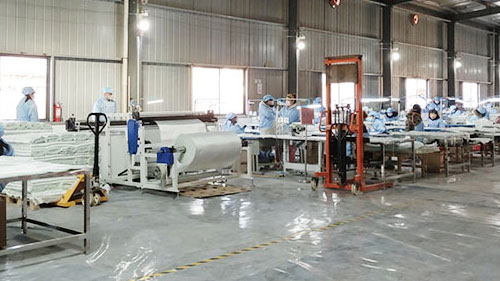DIN SPEC 91489 Explained: The Ultimate Guide to EV Fire Blanket Standards & Compliance
Overview:What is DIN SPEC 91489? Learn about the key tests for EV fire blankets, including thermal resistance, mechanical strength & flame retardancy. Find compliant solutions for bulk needs.
As electric vehicles (EVs) become mainstream, the need for specialized fire safety solutions has never been greater. Traditional fire blankets are ineffective against the intense, long-burning thermal runaway fires of lithium-ion batteries. Enter DIN SPEC 91489 – a German standardization document that has rapidly become the global benchmark for evaluating the performance of EV fire blankets.

For procurement managers, safety officers, and fleet operators, understanding this specification is crucial for making informed purchasing decisions. This guide breaks down what DIN SPEC 91489 tests and what it means for your organization.
What is DIN SPEC 91489?
Published in March 2021 by the German Institute for Standardization (DIN), DIN SPEC 91489 is not a legally binding law but a technical specification. It establishes a unified set of minimum requirements and test methods specifically for fire blankets designed to combat lithium-ion battery fires. Its purpose is to ensure reliability, performance, and quality across the industry.
Key Testing Requirements of DIN SPEC 91489
The specification rigorously tests a blanket's ability to withstand the extreme challenges of an EV fire. Here are the core pillars:
1. Thermal Resistance and Stability:
The Challenge: Lithium-ion battery fires can reach temperatures exceeding 1000°C and can burn for hours.
The Test: Blankets are subjected to a direct flame of at least 1000°C for a minimum of 2 hours. The material must not show significant degradation, tearing, or allow the fire to penetrate.
2. Mechanical Strength (Tensile Strength):
The Challenge: Deploying a blanket over a burning, potentially exploding vehicle requires durability. Sharp edges and intense heat can cause weak materials to tear.
The Test: The blanket's fabric is tested for its tensile strength (both warp and weft directions) to ensure it can withstand the physical stress of deployment and contain an eruption.
3. Flame Retardancy (Limited Flame Spread):
The Challenge: The blanket itself must not contribute to the fire.
The Test: The material is tested for its ability to resist ignition and limit the spread of flame. A common test referenced is the Oxygen Index (LOI) per ASTM D2863, where a higher percentage indicates a more flame-retardant material. DIN SPEC requires a very high LOI.
4. Electrical Insulation & Chemical Resistance:
The Challenge: EV fires involve high-voltage components and the release of toxic, flammable electrolytes.
The Test: The blanket material must provide electrical insulation properties and resist degradation from exposure to chemicals commonly found in burning Li-ion batteries.

Equivalent and Alternative Standards to Consider
While DIN SPEC 91489 is a leading standard, the global landscape is evolving. For bulk buyers, understanding equivalent certifications is key to finding compliant and cost-effective solutions. Other relevant standards include:
KIWA CERTUS Certification (Netherlands): A very rigorous, third-party certified scheme that tests to a similar set of criteria as DIN SPEC 91489. A KIWA-certified product is a strong indicator of quality.
EN 13501-1: Fire Classification of Construction Products: While not EV-specific, blankets may be tested for their fire reaction performance (e.g., achieving a classification like A1 - non-combustible) as part of a broader certification process.
UL 94 (USA): Standard for Safety of Flammability of Plastic Materials: Often used to test the components of the blanket (e.g., the coating) for flammability, contributing to the overall product's safety profile.
IMO FTPC Code (International Maritime Organization): For applications in maritime transport, blankets may need to comply with specific IMO requirements for containing fires.
Important Note for Bulk Buyers: A product that is DIN SPEC 91489 Compliant—meaning it is manufactured to meet all the material and performance requirements of the spec—often represents the optimal value proposition for large-scale procurement (e.g., for fire departments, government fleets, or charging station networks), even if the manufacturer does not hold the certificate itself. The critical factor is verifiable proof that the product can pass the required tests.

Conclusion: Compliance is Key
DIN SPEC 91489 provides an essential framework for ensuring EV fire blankets perform when it matters most. When sourcing, especially in large volumes, the focus should be on demonstrable compliance with these rigorous tests rather than solely on a branded certificate.
Manufacturers should be able to provide technical data sheets, third-party test reports from accredited labs (e.g., for tensile strength, oxygen index), and evidence of successful use cases. This due diligence ensures you receive a product that offers certified-level safety and performance, optimized for budget and scale.
Product link: Silicone Coated EV Fire Blanket





